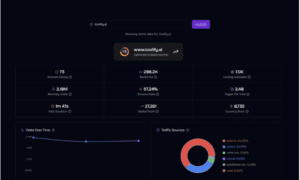Here’s a confession that might shock you: Last month, I sat in a boardroom with the CEO of a prominent fintech company—one that literally sells AI-powered financial solutions—and watched him manually calculate customer churn rates in Excel. When I asked why his finance team wasn’t using AI for this, he laughed nervously and said, “The cobbler’s children have no shoes.”
This isn’t an isolated incident. Research shows that 45% of fintechs offer AI-based solutions to other businesses, yet their own internal operations teams are often stuck in the digital stone age. It’s the ultimate paradox: companies building the future of finance can’t seem to implement that same future in their own back offices.
As someone who spent months manually tracking vendor contracts before building a tech solution, I understand the irony. But in 2025, this paradox isn’t just embarrassing—it’s dangerous.
The Hidden Cost of Hypocrisy
When your marketing team is pitching AI-powered efficiency to clients while your finance team is drowning in spreadsheets, you’re not just inefficient—you’re vulnerable. Here’s what this operational disconnect really costs fintech companies:
Credibility Crisis: How do you convince a bank to adopt your AI solution when your own CFO is manually reconciling accounts? Smart buyers do their homework, and operational inefficiency leaves traces.
Talent Exodus: Top tech talent joins fintech to work on cutting-edge problems. When they discover the internal operations are a decade behind, they don’t stick around. One fintech founder told me he lost three senior engineers who were “disappointed by the gap between our product and our practices.”
Competitive Blindness: While you’re manually crunching numbers, AI-native competitors are using predictive analytics to spot market opportunities before you even know they exist. In fintech’s race for market share, operational speed isn’t optional.
Why Fintech’s Own Operations Are Stuck in 2015
The irony runs deeper when you realize that fintech companies are expected to drive AI adoption with a 40% CAGR, yet many can’t get their own houses in order. Here’s why:
The “Not Our Core Product” Fallacy Fintech companies pour resources into customer-facing AI while treating internal operations as an afterthought. “We’ll optimize our contract workflow after we ship this feature,” they say. That “after” never comes.
The Expertise Assumption There’s a dangerous assumption that because you build AI products, implementing AI internally will be easy. But building for customers and transforming your own entrenched processes are entirely different beasts. Your AI engineers are busy with product development, not internal tooling.
The Scale Trap “We’re too small for enterprise AI tools but too complex for simple solutions.” I hear this constantly from Series B and C fintechs. They’re stuck in operational purgatory, neither startup-scrappy nor enterprise-sophisticated.
The Data Disaster Research indicates that over 80% cite data quality as a major AI implementation obstacle. For fintechs, this is particularly painful. Your customer data might be pristine, but your internal operational data? It’s scattered across Slack, email, spreadsheets, and that one person’s notebook.
The Real-World Wake-Up Call
Let me share a story that crystallized this problem for me. A fintech unicorn (you’d recognize the name) was pitching their AI-powered risk assessment platform to a major bank. During due diligence, the bank asked to see how the fintech used AI in their own risk management and compliance processes.
Awkward silence.
The fintech’s own contract compliance audit was still manual. Their vendor risk assessments? Spreadsheets. Their financial forecasting? More spreadsheets.
The bank didn’t just pass on the product—they poached two of the fintech’s best AI engineers, offering them the chance to “actually implement what they were building.”
Breaking the Paradox: A Practical Roadmap
The good news? Fintech companies have unique advantages in adopting AI for internal operations. You already understand the technology, have access to talent (even if they’re focused elsewhere), and operate in a culture that embraces change. Here’s how to leverage those advantages:
1) Start Where It Hurts Most (And Where You Can Show Off) Pick an internal process that’s both painful AND visible to customers or investors. Financial reporting is perfect—it’s complex enough to showcase AI’s value but critical enough to get executive attention. When your next board meeting features AI-generated insights instead of manual charts, people notice.
2) Steal From Your Own Product Team Your product team has already solved similar problems for customers. That fraud detection algorithm? Adapt it for expense report anomalies. That customer churn prediction model? Use it for employee retention. Cross-pollination between product and operations is your secret weapon.
3) Create “AI Champions” Who Speak Both Languages The biggest challenge isn’t technical—it’s cultural. Identify team members who understand both the operational pain and the technical possibilities. These bridges between your AI engineers and operations teams are worth their weight in Bitcoin.
4) Build Your Own Data Foundation Day One Don’t wait for perfect data. Start capturing operational metrics in a structured way TODAY. Every manual process should leave a data trail. In six months, you’ll have enough to train meaningful models.
The Competitive Advantage Hiding in Plain Sight
Here’s what most fintech companies miss: operational AI excellence is the ultimate differentiator. When McKinsey’s research shows less than one-third of companies follow most AI adoption best practices, the bar is surprisingly low.
Imagine walking into a pitch and saying, “We don’t just build AI solutions—we run our entire operation on them. Our financial forecasts are 94% accurate. Our contract processing is 10x faster than industry standard. Our compliance automation has eliminated 98% of manual reviews.”
That’s not just credibility—that’s a competitive moat.
The Clock Is Ticking
The fintech AI paradox won’t last forever. Companies are already emerging that are AI-native from operations to product. They’re not retrofitting AI onto existing processes—they’re building AI-first from day one.
For established fintechs, the window to address this paradox is closing. The choice is stark: either become genuinely AI-powered throughout your organization, or watch as truly AI-native competitors eat your lunch while you’re still updating spreadsheets.
The most innovative product in the world can’t save you if your operations are stuck in the past. And in fintech, where speed and efficiency determine survival, operational excellence isn’t just about cost savings—it’s about credibility, talent retention, and competitive advantage.
The cobbler’s children need shoes. And in 2025, those shoes better be AI-powered, or someone else will be wearing them.
Matt Lhoumeau is the co-founder and CEO of Concord, a contract management platform used by over 1,500 companies worldwide. Before founding Concord, Matt worked with Nicholas Sarkozy during the 2007 French presidential campaign and later for a major telecom company, where his frustration with manual contract management inspired him to transform how businesses handle agreements.



































